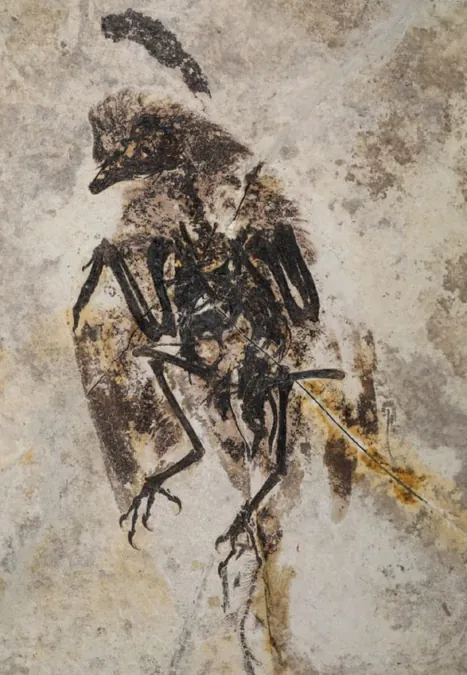
Stunning Discovery: New Tiny Enantiornithine Bird Fossil Found in China!
2025-01-20
Author: Wei Ling
Exciting Discovery
Exciting news from the world of paleontology: researchers have unveiled a new genus and species of enantiornithine bird, named Neobohaiornis lamadongensis, from a remarkably preserved skeleton found in northeastern China. This discovery adds to our understanding of the diverse prehistoric avian life that thrived during the Cretaceous period, approximately 119 million years ago.
What are Enantiornithes?
Enantiornithes, often called "opposite birds," were named for their unique shoulder joint structure, which differs from that of modern birds. Characterized by their teeth and clawed wings, these Mesozoic avians were once the most diverse bird group on Earth before their extinction 66 million years ago, likely due to the catastrophic meteor impact that wiped out most dinosaur species.
About Neobohaiornis lamadongensis
Neobohaiornis lamadongensis belongs to the early enantiornithine family, Bohaiornithidae. Its skeletal remains were found in the Jiufotang Formation near Lamadong, in Liaoning Province, a hotspot for fossil discoveries from the Early Cretaceous Jehol Biota. This region is renowned for yielding fossils that illuminate a significant portion of Mesozoic avian diversity — about 50% of all known Mesozoic bird species!
Insights from the Discovery
Paleontologist Dr. Jingmai O’Connor and her colleagues noted that their discovery reveals more about the ecological roles these birds filled. They had distinct robust teeth, demonstrating a unique adaptation compared to other contemporary avian species. While many early enantiornithines were limited in body size, Neobohaiornis lamadongensis presents a notable exception, weighing around 50 grams — substantially smaller than other bohaiornithids, which typically exceeded 100 grams.
Fascinating Feather Traces
What makes this discovery particularly fascinating is the ghostly halo of feather traces that envelop the fossil. Researchers found feathers extending from areas including the neck, shoulders, and tail, which might suggest that these ancient birds had feathered bodies akin to modern birds. The primary feathers of Neobohaiornis were about twice the length of its humerus, indicating they may have possessed broad wings, essential for flight.
Implications for Evolution
This well-preserved specimen shines new light on the plumage and aerodynamic adaptations of bohaiornithids, hinting at an impressive evolutionary trajectory of flight capabilities among early birds. Interestingly, the fossil showcases not just feathering but reveals that the rostrum was likely featherless, a detail that adds depth to the debate on the plumage characteristics of early avian species.
Conclusion
As we continue to unearth new species like Neobohaiornis lamadongensis, we gain vital insights into avian evolution and the complexities of prehistoric ecosystems. This discovery is a thrilling reminder of the secrets still buried in our planet’s history.
Further Reading
For a deep dive into the details of this groundbreaking research, check out the latest edition of Scientific Reports, where this study has been published. Stay tuned for more incredible discoveries that reshape our understanding of the natural world!


 Brasil (PT)
Brasil (PT)
 Canada (EN)
Canada (EN)
 Chile (ES)
Chile (ES)
 Česko (CS)
Česko (CS)
 대한민국 (KO)
대한민국 (KO)
 España (ES)
España (ES)
 France (FR)
France (FR)
 Hong Kong (EN)
Hong Kong (EN)
 Italia (IT)
Italia (IT)
 日本 (JA)
日本 (JA)
 Magyarország (HU)
Magyarország (HU)
 Norge (NO)
Norge (NO)
 Polska (PL)
Polska (PL)
 Schweiz (DE)
Schweiz (DE)
 Singapore (EN)
Singapore (EN)
 Sverige (SV)
Sverige (SV)
 Suomi (FI)
Suomi (FI)
 Türkiye (TR)
Türkiye (TR)
 الإمارات العربية المتحدة (AR)
الإمارات العربية المتحدة (AR)